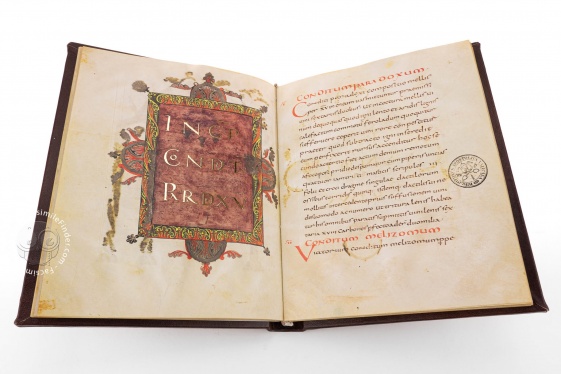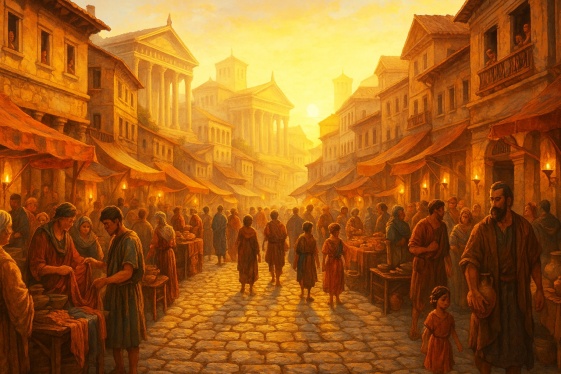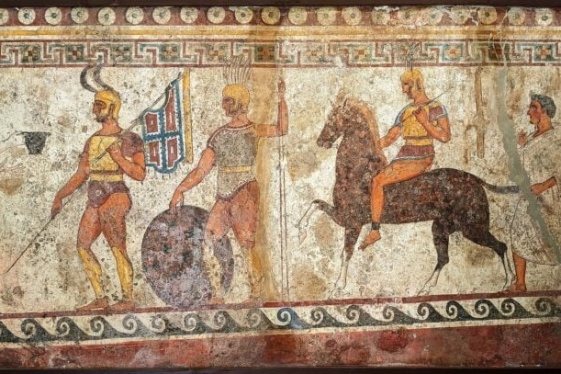Crowds, stage, and steam: inside Roman entertainment
When we think of ancient Rome, it’s easy to picture stern senators, burly warriors, and marble temples. But Romans also loved to unwind, and their leisure, at least in part, can feel surprisingly familiar: they packed stadiums for races, cheered stars of the stage and arena, lingered in public baths, ate in taverns, gambled, and celebrated holidays...
READ MOREDiscover the World’s Oldest Surviving Cookbook, De Re Coquinaria, from Ancient Rome
Western scholarship has had “a bias against studying sensual experience,” writes Reina Gattuso at Atlas Obscura, “the relic of an Enlightenment-era hierarchy that considered taste, touch, and flavor taboo topics for sober academic inquiry.” This does not mean, however, that cooking has been ignored by historians. Many a scholar has taken European c...
READ MOREAmerica: The Roman Connection
During the American Revolutionary War in the awful winter of 1777-79 at Valley Forge, General George Washington defied the wishes of Congress by ordering Joseph Addison’s play, Cato: A Tragedy, performed for his bedraggled troops. Fearing that its sad conclusion would demoralize the men (Cato took his own life rather than submit to rule by Julius C...
READ MOREThe price of glory: how ancient warriors and politicians made – and spent! – their money
What did a Roman legionary or gladiator actually earn, and what can that tell us about the societies they served? If we look beyond grand battles and legendary rulers, the economic details of these roles reveal the real – and deeper – connections between war, wealth, and social mobility in Antiquity. To broader questions of class, opportunity, and...
READ MORERoman-era mosaic panel with erotic theme that was stolen during World War II returns to Pompeii
A mosaic panel on travertine slabs, depicting an erotic theme from the Roman era, was returned to the archaeological park of Pompeii on Tuesday, after being stolen by a Nazi German captain during World War II. The artwork was repatriated from Germany through diplomatic channels, arranged by the Italian Consulate in Stuttgart, Germany, after having...
READ MOREBeneath the halls of power: life in ancient Rome's Suburra
Just steps away from the grandeur of the Roman forums, between the Quirinal, Viminal, and Esquiline hills, the Suburra was a neighborhood that never quite fit Rome’s polished image. It was dense, noisy, working-class, and essential, home to those who sustained the city’s daily rhythms. From the third century BC onwards, this district came to repres...
READ MOREA river runs through it: The Tiber has shaped the culture and history of four regions
Italy is home to almost 1,200 rivers but the three best known are the Po, the Arno, and the Tiber. The Tiber, also called the Tevere, is not the longest river in Italy but it is the longest in central Italy and has played a crucial role in the development of several regions and the Eternal City of Rome. The river flows from two springs separated by...
READ MORESamnites: The Italian Enemies of Rome
The Samnites were Italic tribes that migrated from Central Europe to the mountainous area of south-central Italy in the 9th century BC. They later became an enemy of Rome. Even though these tribes shared language and cultural ties, each maintained a level of autonomy in governance and societal organization. They were native to a region known as Sam...
READ MOREThe domed oven: the Roman invention that still rules the kitchen
The domed stone oven – forno a cupola in Italian – is one of those features that people who love cooking often dream of: it’s beautiful to look at, and it makes food taste better. Lighting it takes time and some patience, but once it’s hot, it holds the heat for hours and creates that perfect environment for making bread or pizza the old-fashioned...
READ MOREDid they earn a lot in Ancient Rome: impressive figures in dollar terms
One of the largest and richest states of its time was the Roman Empire: the only state that could challenge it was the Chinese Han Empire. UNN reports on how much the inhabitants of ancient Rome could earn and how much it costs in modern money, citing a publication in the journal Nature Communications. Scientists compared Rome in 165 AD and the Han...
READ MORE











